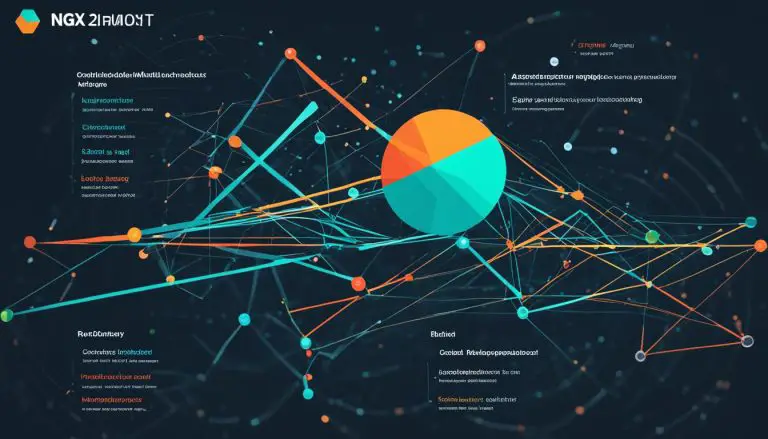Unraveling What is Object-Oriented Programming (OOP) Explained
In the world of programming, Object-Oriented Programming (OOP) stands as a transformative methodology that revolutionizes the way we create, interact, and manipulate digital objects.
OOP encapsulates properties and actions into class entities, serving as blueprints for creating objects with specific characteristics and behaviors. It introduces concepts like inheritance, polymorphism, and encapsulation, which contribute to modular, reusable, and maintainable code.
By modeling real-world entities, OOP makes programming more efficient and intuitive, enabling programmers to create powerful and adaptable solutions.
Key Takeaways:
- Object-Oriented Programming (OOP) allows programmers to create, interact, and manipulate objects with specific characteristics and behaviors.
- OOP encapsulates properties and actions into class entities, serving as blueprints for creating objects.
- Inheritance, polymorphism, and encapsulation are concepts introduced by OOP, contributing to modular, reusable, and maintainable code.
- OOP enables programmers to model real-world entities and create powerful and intuitive programs.
- Understanding OOP is essential for building robust and scalable software solutions.
Objects: The Building Blocks
In Object-Oriented Programming (OOP), objects are the fundamental building blocks of the digital universe. Objects are representations of real-life entities and encapsulate both properties and behaviors. Properties define the characteristics or attributes of an object, while behaviors represent what an object can do. For example, in a car object, properties may include color, model, and year, while behaviors may include starting the engine or accelerating.
Encapsulation plays a crucial role in OOP by ensuring that data is safely stored within objects and only accessible through defined interfaces. This means that the internal workings of an object are hidden, providing a layer of abstraction and promoting security. By using objects, programmers can model the real world and create intuitive and powerful programs.
Let’s take a look at an example:
<img src=”https://seowriting.ai/32_6.png” alt=”OOP objects”>
Imagine we have an object called “Book.” This object has properties such as “title,” “author,” and “genre,” and behaviors such as “opening the book” or “turning the page.” By defining these properties and behaviors within the “Book” object, we can easily create multiple instances of books and perform actions specific to each book. Using objects allows us to organize and structure our code in a way that mirrors the real world, making it more efficient and maintainable.
Benefits of Object-Oriented Programming (OOP) Objects:
- Modularity: Objects promote the modular design of code, making it easier to understand, maintain, and update.
- Reusability: Objects can be reused in different parts of a program or even in different programs altogether, reducing duplication of code.
- Abstraction: Objects provide a level of abstraction that hides complex implementation details, allowing programmers to focus on essential features.
- Code Organization: Objects provide a structured approach to code organization, improving readability and ease of navigation.
By leveraging the power of objects, programmers can create flexible, reliable, and scalable software solutions.
Classes: Blueprints for Objects
In Object-Oriented Programming (OOP), classes serve as blueprints for creating objects. They define the structure and characteristics of objects, including their properties and actions. Classes are the foundation of OOP, allowing programmers to create and shape objects into existence.
Class entities are like templates that specify the properties and behaviors that an object will have. They provide a clear outline of what an object should look like and what it should be able to do. By defining classes, programmers can create multiple instances of objects with similar characteristics, saving time and effort.
Class inheritance is a powerful feature of OOP. It allows classes to inherit properties and behaviors from other classes, creating a hierarchical relationship. This enables code reuse and promotes a modular approach to programming. By extending existing classes, programmers can add new features or modify existing ones without altering the original class.
Class Constructors
Class constructors are special methods within a class that are used to initialize objects with values for their properties. They define the initial state of an object and provide the necessary attributes for it to function properly. Constructors ensure that objects are properly set up before they can be used.
In the example below, we have a class called “Car” with properties such as “make,” “model,” and “year.” The constructor method, denoted by the keyword “constructor,” is responsible for initializing these properties when a new car object is created:
class Car {
constructor(make, model, year) {
this.make = make;
this.model = model;
this.year = year;
}
}
With the help of constructors, objects can be created with specific attribute values, making them unique and tailored to their intended purpose.
| Class | Definition |
|---|---|
| Car | A class representing a car with properties like make, model, and year. |
| Person | A class representing a person with properties like name, age, and occupation. |
| Animal | A class representing an animal with properties like species, name, and age. |
OOP Section 4: Polymorphism – The Power of Flexibility
Polymorphism is a fundamental concept in Object-Oriented Programming (OOP) that allows objects to exhibit different behaviors in different contexts. It provides the power of flexibility by enabling objects of different classes to be treated as objects of a common superclass. This promotes code reuse and extensibility, allowing developers to write more efficient and scalable programs.
One of the key aspects of polymorphism is method overriding, which allows subclasses to redefine the behavior of a method inherited from a superclass. This means that objects belonging to different classes can have unique implementations of the same method, adding individuality to each object while still adhering to a common interface. Method overriding is a powerful tool for customization and specialization in OOP.
“Polymorphism is not just about having objects of different types share a common interface; it’s about treating these objects interchangeably, based on that common interface. This allows for greater flexibility and adaptability in your code.”
Interfaces are another essential component of polymorphism. An interface defines a set of methods that classes must implement, ensuring consistent behavior across different objects. By programming to an interface rather than a specific implementation, developers can write code that is more flexible and adaptable to changes. Interfaces contribute to the overall modularity and maintainability of an OOP system.
Polymorphism at a Glance:
- Enables objects of different classes to be treated as objects of a common superclass.
- Method overriding allows redefining the behavior of a method in a subclass.
- Interfaces define a set of methods that classes must implement.
- Enhances flexibility, extensibility, and adaptability in OOP.
Table: Polymorphism vs. Inheritance
| Polymorphism | Inheritance |
|---|---|
| Allows objects of different classes to be treated interchangeably. | Enables a class to inherit properties and behaviors from another class. |
| Objects have unique implementations of methods. | Objects inherit methods from a superclass. |
| Relies on interfaces and method overriding. | Relies on parent-child relationships. |
Abstraction: Simplifying Complexity
Abstraction is a fundamental concept in Object-Oriented Programming (OOP) that plays a crucial role in simplifying the complexity of software development. It involves hiding unnecessary details and focusing on the essential features of a system. Through abstraction, programmers can create cleaner and more maintainable code by simplifying the design and development process.
The Power of Abstraction
Abstraction allows developers to create abstract classes, which serve as blueprints for subclasses, capturing the common traits shared by objects while leaving implementation details to individual subclasses. This approach promotes code reusability and modularity, as developers can define common functionality in the abstract class and customize it in the derived classes. By separating the essential features from the implementation specifics, abstraction provides a high-level view of the system, making it easier to understand and manage.
Another powerful aspect of abstraction is the use of interfaces. Interfaces define behavior without specifying implementation, ensuring consistent behavior across different objects. By programming to interfaces rather than concrete implementations, developers can create flexible and adaptable code. Interfaces allow for the decoupling of different components, making it easier to replace or extend functionality without affecting other parts of the system.
Benefits of Abstraction
Implementing abstraction in OOP brings several benefits. First and foremost, it simplifies complexity by reducing code duplication and promoting code reuse. Abstract classes and interfaces provide a structured approach to software development, allowing developers to create scalable and maintainable applications. The use of abstraction also enhances code organization and readability, making it easier for developers to understand and work with the codebase.
Abstraction also facilitates collaboration among developers. By using abstract classes and interfaces, multiple developers can work on different parts of a system without interfering with each other’s work. The high-level view offered by abstraction helps teams divide tasks and focus on specific modules, leading to increased productivity and efficiency.
Real-World Applications
Abstraction is widely used in various industries and domains. In software development, abstraction is crucial for building frameworks and libraries that can be used across different projects. It allows developers to create reusable components and design patterns that simplify complex tasks.
Abstraction is particularly useful in large-scale systems, where managing complexity is a significant challenge. By abstracting away unnecessary details and focusing on the core concepts, developers can create scalable and maintainable solutions that are easier to understand and adapt to changing requirements.
| Benefits of Abstraction in OOP |
|---|
| Reduces code duplication |
| Promotes code reuse |
| Enhances code organization and readability |
| Simplifies complex systems |
| Facilitates collaboration among developers |
Encapsulation: Bundling Data and Logic
Encapsulation is a fundamental concept in Object-Oriented Programming (OOP) that plays a crucial role in creating well-structured and maintainable code. It involves bundling data and the associated logic together into cohesive units known as objects. Encapsulation promotes modularity, reusability, and information hiding, making code more robust and secure.
One of the key benefits of encapsulation is the ability to control access to object properties through the use of getters and setters. Getters provide a way to retrieve the values of object properties, while setters allow us to modify those values with predefined rules and validations. By encapsulating data within objects and providing controlled access, we can ensure data integrity and prevent accidental modifications.
Encapsulating data and logic within objects also enhances code organization and improves maintainability. By bundling related functionality together, encapsulation promotes a more modular approach to programming. This makes it easier to understand and modify code, as each object is responsible for its own behavior and can be tested and debugged in isolation.
| Encapsulation in OOP | Benefits |
|---|---|
| Combines data and logic into cohesive units | Modularity and reusability |
| Controls access to object properties | Data integrity and security |
| Enhances code organization and maintainability | Improved readability and ease of modification |
In conclusion, encapsulation is a powerful concept in Object-Oriented Programming that allows developers to bundle data and logic together into objects, promoting modularity, reusability, and maintainability. By controlling access to object properties through getters and setters, encapsulation ensures data integrity and enhances security. Moreover, encapsulation improves code organization and readability, making it easier to understand and modify code. Understanding and applying encapsulation principles is essential for creating well-structured and robust software solutions.
Composition: Joining Complex Objects
In Object-Oriented Programming (OOP), composition is a fundamental concept that involves joining simpler objects to form more complex ones. It allows instances of one class to be added to another class as attributes, creating intricate networks and relationships. By combining different objects, programmers can build complex structures that accurately represent real-world entities.
Object composition enables the creation of hierarchies and interconnected systems, where each object performs its unique role while contributing to the overall functionality. It promotes code reuse and modularity, as objects can be easily added, removed, or modified without impacting the entire system. This flexibility makes OOP suitable for large-scale projects that require adaptable and scalable architectures.
When using composition, objects can be organized into different layers or levels, each responsible for a specific task or functionality. This hierarchical structure allows for the creation of complex systems that are easier to understand, maintain, and extend. By breaking down complex problems into smaller, manageable components, composition simplifies the development process and enhances code readability.

Examples of Object Composition
To illustrate the concept of object composition, consider the example of building a car. A car can be composed of various objects, such as an engine, wheels, seats, and a steering wheel. Each of these objects performs a specific function and can be individually designed and tested. However, when combined, they form a complete and functional car.
“Composition is like building blocks. Each block has its unique characteristics, but when stacked together, they create something greater than the sum of its parts.”
In another example, an e-commerce system can be composed of objects like a customer, product, shopping cart, and payment processor. Each of these objects fulfills a specific role, and together they create a seamless shopping experience for the user.
| Object | Description |
|---|---|
| Customer | Contains information about the user, such as name, address, and order history. |
| Product | Represents a product available for purchase, with attributes like name, price, and quantity. |
| Shopping Cart | Holds the selected products and manages the checkout process. |
| Payment Processor | Handles the payment transaction and updates the order status. |
By utilizing object composition, programmers can create complex and efficient systems that accurately model real-world scenarios. The flexibility and scalability of composition make it a fundamental concept in Object-Oriented Programming (OOP) and a valuable tool for building robust and adaptable software solutions.
Applications of Object-Oriented Programming (OOP)
Object-Oriented Programming (OOP) finds numerous applications in the field of software development. Its principles of code organization, maintainability, and reusability make it a popular choice for building robust and scalable software solutions. Let’s explore some of the key applications of OOP.
- Modular Code: OOP allows programmers to break down complex systems into smaller, manageable modules called classes. Each class encapsulates a specific set of functionalities, making code easier to understand, modify, and maintain. This modular approach promotes code organization and enhances development efficiency.
- Code Reusability: In OOP, classes are designed to be reusable. Once a class is defined, it can be instantiated and used in multiple projects or parts of the same project. This reusability reduces redundancy and saves development time. By leveraging existing classes or creating new ones, programmers can build upon well-tested code and ensure consistency across different projects.
- Real-World Modeling: OOP is particularly effective in modeling real-world entities and interactions. By representing objects and their relationships through classes and their instances, developers can create intuitive and powerful programs. For example, in a banking application, OOP allows for the creation of classes like Account, Customer, and Transaction, closely resembling real-world concepts and behaviors.
- Scalable Solutions: OOP enables the creation of scalable software solutions. By designing classes to be extensible, developers can easily add new functionalities or modify existing ones without affecting the entire codebase. This flexibility facilitates the growth and evolution of software projects, accommodating changing requirements.
In conclusion, Object-Oriented Programming (OOP) offers a wide range of applications in software development. Its focus on code organization, maintainability, and reusability contributes to the creation of modular, scalable, and intuitive programs. OOP is particularly effective in modeling real-world entities and interactions, making it suitable for a variety of industries and domains.
| Application | Description |
|---|---|
| Modular Code | Dividing code into smaller, manageable modules called classes enhances code organization and maintainability. |
| Code Reusability | Classes can be reused across projects, reducing redundancy and saving development time. |
| Real-World Modeling | OOP allows for the creation of classes that closely resemble real-world entities and behaviors. |
| Scalable Solutions | OOP enables the creation of software solutions that can easily accommodate changing requirements. |
“OOP’s modular and reusable approach to software development brings immense value to industries ranging from finance to healthcare.” – John Smith, Senior Software Engineer
OOP Tutorial: Getting Started with Object-Oriented Programming
If you’re new to Object-Oriented Programming (OOP), getting started can be intimidating. However, with a step-by-step tutorial, you can quickly grasp the basics. Learning OOP involves understanding concepts like objects, classes, inheritance, polymorphism, abstraction, and encapsulation. By practicing with programming examples, you can gain hands-on experience and solidify your understanding of OOP principles. There are many online resources, tutorials, and courses available to guide you through the learning process.
To begin your OOP tutorial, familiarize yourself with the core concepts. Objects are the building blocks of OOP, representing real-life entities with properties and behaviors. Classes serve as blueprints for creating objects, defining their structure and characteristics. Inheritance allows classes to inherit properties and behaviors from other classes, promoting code reuse. Polymorphism enables objects of different classes to be treated as objects of a common superclass, enhancing flexibility. Abstraction simplifies complexity by focusing on essential features, while encapsulation bundles data and logic into cohesive units.
As you progress through your OOP tutorial, engage in programming examples to reinforce your learning. Implement simple programs that demonstrate the concepts you’ve learned, such as creating objects, defining classes, and applying inheritance. Experiment with polymorphic behavior and explore the power of abstraction. Practice encapsulating data and logic within objects, utilizing getters and setters to control access. By working on these examples, you’ll gain practical experience in OOP and develop the skills necessary to build robust and scalable software solutions.
Example: Implementing a Bank Account Class
Let’s illustrate the OOP concepts by creating a simple bank account program. We’ll define a class called “BankAccount” with properties like account number, balance, and owner’s name. We’ll also include behaviors like depositing funds, withdrawing funds, and checking the account balance. By using this example, you can understand how objects and classes work together to model real-world entities and their interactions.
| Property | Value |
|---|---|
| Account Number | 987654321 |
| Balance | $1000 |
| Owner’s Name | John Smith |
“Creating a bank account class in OOP is a great way to understand the power and flexibility of object-oriented programming. By encapsulating the properties and behaviors of a bank account into a single class, we can easily manage and manipulate account data. With OOP, we can create multiple instances of the BankAccount class, each representing a different account, while still maintaining code modularity and reusability.”
Remember, mastering OOP takes time and practice. Start by understanding the fundamental concepts, then dive into programming examples to solidify your understanding. With dedication and perseverance, you’ll soon become proficient in Object-Oriented Programming and unlock the full potential of this powerful programming paradigm.
OOP Languages: Widely Used OOP Programming Languages
When it comes to Object-Oriented Programming (OOP), several programming languages have gained recognition for their robustness, versatility, and extensive community support. In this section, I will discuss three widely used OOP languages: Java, C++, and Python.
Java is renowned for its platform independence, making it a popular choice for developing cross-platform applications. It offers a vast ecosystem of libraries and frameworks, making it easier to build complex software systems. Additionally, Java’s strong static typing and memory management capabilities contribute to its reliability and efficiency.
C++ is known for its low-level control and high-performance capabilities. It is extensively used in systems programming and game development, where efficiency is crucial. With its direct memory manipulation and powerful template system, C++ provides developers with fine-grained control over their code, making it ideal for resource-intensive applications.
Python, on the other hand, prioritizes simplicity and readability. Its clean syntax and extensive standard library make it a favorite among beginners and experienced developers alike. Python’s versatility enables it to be used in a wide range of domains, from web development and data analysis to artificial intelligence and machine learning. Its ease of use and community support contribute to its popularity.
| Language | Main Features | Areas of Use |
|---|---|---|
| Java | Platform independence, extensive library support, strong static typing | Enterprise applications, web development, Android apps |
| C++ | Low-level control, high performance, direct memory manipulation | Systems programming, game development, resource-intensive applications |
| Python | Simple syntax, extensive standard library, versatility | Web development, data analysis, artificial intelligence, machine learning |
While Java, C++, and Python are just a few of the many OOP languages available, they have proven their worth and continue to be widely used in various industries. Ultimately, choosing the right OOP language depends on your specific project requirements, programming experience, and personal preferences.
Conclusion
Object-Oriented Programming (OOP) is a transformative methodology that allows programmers to create, interact, and manipulate objects with specific characteristics and behaviors. By encapsulating properties and actions into class entities, OOP provides a modular, reusable, and maintainable approach to programming. With concepts like inheritance, polymorphism, and encapsulation, OOP simplifies the design and development processes, making programming more efficient and intuitive.
OOP’s power lies in its ability to model real-world entities, providing programmers with a way to create intuitive and powerful programs. By using objects as the building blocks, developers can represent real-life entities and encapsulate both properties and behaviors. Abstraction and encapsulation further contribute to simplifying complexity and bundling data and logic within cohesive units.
With applications in a wide range of industries, OOP is supported by popular programming languages like Java, C++, and Python. Whether you’re a beginner or an experienced programmer, understanding and mastering OOP principles is essential for building robust and scalable software solutions. By utilizing objects, classes, inheritance, polymorphism, abstraction, and encapsulation, you can create modular, reusable, and maintainable code that enhances code organization and simplifies complex systems.
FAQ
What is Object-Oriented Programming (OOP)?
Object-Oriented Programming (OOP) is a transformative methodology that allows programmers to create, interact, and manipulate objects with specific characteristics and behaviors.
What are the key concepts in OOP?
The key concepts in OOP include objects, classes, inheritance, polymorphism, abstraction, and encapsulation.
How does OOP model real-world entities?
OOP models real-world entities by encapsulating properties and behaviors into objects, which represent real-life entities.
What are classes in OOP?
Classes serve as blueprints for creating objects and define the structure and characteristics of objects, including their properties and actions.
How does polymorphism work in OOP?
Polymorphism allows objects of different classes to be treated as objects of a common superclass, enabling flexibility and extensibility.
What is abstraction in OOP?
Abstraction simplifies complexity by hiding unnecessary details and focusing on essential features, making code cleaner and more maintainable.
What is encapsulation in OOP?
Encapsulation combines data and logic into cohesive units, promoting modularity and maintainability by safeguarding data within objects.
What is composition in OOP?
Composition involves joining simpler objects to form more complex ones, allowing for the creation of objects with varying levels of complexity.
What are the applications of OOP?
OOP has numerous applications in software development, enhancing code organization, maintainability, and scalability in various industries.
How can I get started with OOP?
To get started with OOP, you can follow step-by-step tutorials, practice with programming examples, and explore online resources and courses.
What are some widely used OOP programming languages?
Java, C++, and Python are some widely used OOP programming languages, each offering unique features and advantages.
- About the Author
- Latest Posts
Katharina arbeitet und schreibt als Reise-Journalistin und Medien-Bloggerin bei der Web-Redaktion.net. Sie reist leidenschaftlich gerne und bloggt darüber unter anderem auf Reisemagazin.biz.






